The History of Cass County, Michigan
Click photos below
for expanded views
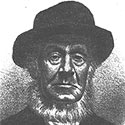
| 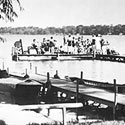
| 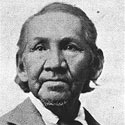
| 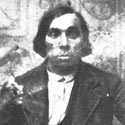
| 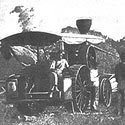
| 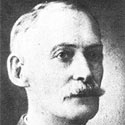
| 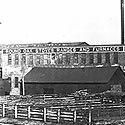
|
In October 1825, Uzziel Putnam, his wife, Anna, and their two-year-old daughter, Ziltha, packed up their belongings-including three oxen and seventeen head of cattle-and left Fort Wayne, Indiana, for Michigan. They first stopped at Niles and then, on 18 November, moved into a small floorless shanty on the Pokagon Prairie, becoming Cass County's first permanent settlers.
The winter of 1825/26 was particularly harsh, but the Putnams, who moved into a log cabin in January, survived, though they often subsisted on boiled corn and occasional "johnny cakes" (parched corn pounded into flour and fried into cakes).
Other settlers soon followed the Putnams. Baldwin Jenkins, his wife and seven children, Abram Townsend, Lewis Edwards and Israel Markham were among those who settled a land characterized by small prairies, interspersed with thick woods and numerous lakes.
Cass County, named after Lewis Cass, was organized in 1829 when its population was about 900. As in other counties, land speculators lobbied for the location of the county seat in an area they owned.
Geneva, a small community in Penn Township, was the county's first governmental seat. Elias B. Sherman, one of Cass's early lawyers, had campaigned for Geneva's selection. But when the town's supporters reneged on a promise of land in return for his support, Sherman successfully sought to have the decision declared void "because the commissioners who named it were self-interested, having personally purchased land thereabout."
The campaign for a replacement soon began. In the meantime, Sherman had purchased eighty acres near Diamond Lake, platted a village named Cassopolis, donated land for the county's buildings, and named streets after the three commissioners who were to locate the new governmental center. In 1834 Cassopolis became Cass's new county seat.
In Cass County traditional east to west migration patterns were reversed. The early settlers came from the west, using Niles in adjacent Berrien County as a stepping-off point. Like all southern Michigan counties, Cass had its share of New England setters. But it also had many settlers from the South and unusually large communities of Native Americans and African Americans.
One of the most disgraceful episodes in antebellum American history was the removal of eastern Indians to unoccupied lands west of the Mississippi River. Most of the Indians forced to move were from the South, but Michigan Potawatomis also experienced the "trail of tears."
The Potawatomis lived in southwestern Michigan, including Cass. By 1828 they had signed treaties giving up all but a forty-nine-square-mile reservation in Berrien County. In 1833 demand for this prized agricultural land forced the Potawatomis to forfeit it too.
Landless and resented by many white settlers, the Potawatomis were ordered to move to Kansas. After many delays United States troops arrived in Niles to "escort" them to their new homes. Though many hid, they "were literally hunted down by the U.S. Army" and shipped west.
One band of about 250 successfully resisted. Led by Leopold Pokagon, the band by 1837 had purchased 1,000 acres of land in Cass's Silver Creek Township, a traditional hunting area. (It is unclear why the government did not force Pokagon's people west, but part of the explanation may lie in their conversion to Christianity decades before and in their land purchases.)
At the new settlement, Pokagon allowed each family to select land and build a cabin. The land was held in trust by the band, but after recurring problems, it was divided up. Two-thirds of the tribe then sold their land and moved to adjacent Van Buren County.
The Potawatomis' leader during the second half of the century was Simon Pokagon, Leopold's son. Born in 1830 near Sumnerville, Simon was educated at Notre Dame and Oberlin. He spent his life trying to improve Indian-white relations and make their integration as easy as possible.
Simon Pokagon authored numerous booklets and articles urging that Indians must "no longer live as their fathers, but must live as white men do, or else lie down and die before the cruel march of civilization." He also urged whites to accept Indians as equals and forced the government to live up to its treaty obligations to his band.
Many of the descendants of the Potawatomis still live in Cass and belong to the Potawatomi Indian Nation - an organization that preserves their Indian heritage and culture.
Besides being the home of Pokagon's Potawatomis, Cass County was a haven for African Americans migrating north during the mid-nineteenth century.
In 1836 Henry H. Way, a Quaker preacher, returned to Cass from the South with a fugitive slave named Lawson and settled him in Calvin Township. Soon Cass's Quakers, many of whom had left the South to escape slavery, were providing aid and comfort to escaped slaves along two different routes of the Underground Railroad. African American settlement in Cass was further promoted in 1849 when John Saunders, a Virginian, manumitted his inherited slaves, purchased land in Calvin Township and built a cabin for each family.
An African American community soon developed. Though occasionally harassed by southerners attempting to return runaway slaves, African Americans, both escaped and free, settled in Cass in large numbers. By 1860 the county's African American population was larger than that in all counties but Wayne.
African American settlers in Cass founded schools and churches, were elected to township offices and served in many non-agrarian professions. Though some simply owned small farms, others enjoyed greater prosperity. In 1873, when Cass African Americans made up seven percent of the county's population, William Allen, who had arrived in Cass during the late 1840s, was the county's principal stock buyer and owned 1,200 sheep, 100 hogs and over 800 acres of land.
By the early twentieth century Cass's African American population was exceeded by that of counties with growing metropolitan areas. But this fact does not decrease its nineteenth century significance. According to one historian, the experiences of Cass's African Americans were unlike those of northern urban African Americans because the economic dependency that developed between Cass's white and African American populations helped minimize racism, promote cooperation between the races and create an African American community unique to the North.
Dowagiac, which derived its name from the Potawatomi word Ndowagayuk, meaning "foraging ground," is Cass County's largest community. Settled in 1835, it incorporated into a city in 1877 and for several years claimed to be the nation's smallest city. It long ago lost that distinction, but it has been the home of several important inventors.
The most versatile of these was James Heddon. He came to Cass in 1860 at the age of fifteen and soon became interested in bees. By the 1880s he was internationally famous for his many innovations connected with bee culture, and his apiary made him the leading honey producer in the country.
Heddon's greatest invention, however, had nothing to do with bees. Apparently, one day while fishing Heddon tossed a small piece of whittled wood into the pond only to have the bass that had been eluding his hook leap for the wood. Heddon had invented the casting plug. He experimented and perfected his lures, and by the turn of the century they appeared on fishing poles everywhere. Heddon died in 1911. In 1956 his lure won him a place in the Sports Hall of Fame.
In 1854 P.D. Beckwith arrived in Dowagiac and began a machine shop and foundry. Responding to a request to make a heating stove, Beckwith soon found himself inundated with orders for additional stoves. The result was the Round Oak Stove Company.
In 1886 Beckwith manufactured the first Round Oak furnace. Though there were other furnace companies in Dowagiac, Round Oak remained the largest. Its furnaces were placed in thousands of homes across the Midwest. During its heyday in the early twentieth century, it employed over 1,400 persons and "for years almost everyone in Dowagiac had some working connection with the company." Today, however, Dowagiac manufactures neither furnaces nor stoves.
Nor does it manufacture cars, though in 1908 it seemed headed toward becoming a second Detroit. That was the year that Frank Lake and Leon Lyle founded the Dowagiac Motor Car Company. By early 1909 the company was producing both cars and trucks; the largest truck was capable of carrying over a ton. Lake and Lyle were the inventive genius and the capable manager, respectively. The company folded soon after they both died in a streetcar accident in June 1909.
Cass County preserves its past in two house museums, the Pioneer Log Cabin in Cassopolis and the Newton Home in Volinia. The former was built in 1923 and now depicts pioneer life in Cass. The latter is a 1867 home with rooms furnished from the late nineteenth century.
The Prehistoric Past of Cass County
When the first white settlers began homesteading in Cass County in the 1820s, they occupied land that had been Potawatomi territory for centuries. At the time, there were three major Potawatomi settlements in the Cass area: Pokagon's village near Sumnerville, Shavehead's village near Shavehead Lake in Porter Township and Weesaw's village near Nicholsville in Volinia Township.
The settlers found ample evidence that other people had also lived in the area. Along the banks of Christiana Creek and Dowagiac Creek were round mounds of earth, some as much as 25 feet in height and over a hundred feet in diameter, most much smaller. In the central and eastern parts of the county were earthen walls enclosing a circular or rectangular space, usually under an acre in size. Two ditches forming a horseshoe or U-shaped pattern were near Sumnerville. On the prairies were raised garden beds formed of earth heed into checkerboard, parallel-rowed, or polka-dot patterns.
The round mounds are Indian burial places constructed perhaps from 100 B.C. to A.D. 1000. The earthwork enclosures are the remains of palisaded walls around small villages dating from about A.D. 1000-1500. The garden beds -- used to grow corn, beans and squash -- may be more recent. The function of the horseshoe ditches remains a mystery. |
We sincerely thank Michigan History Magazine for granting reprint rights to this article, originally appearing in the July/Aug 1980 issue. To subscribe, click Michigan History Magazine.
|